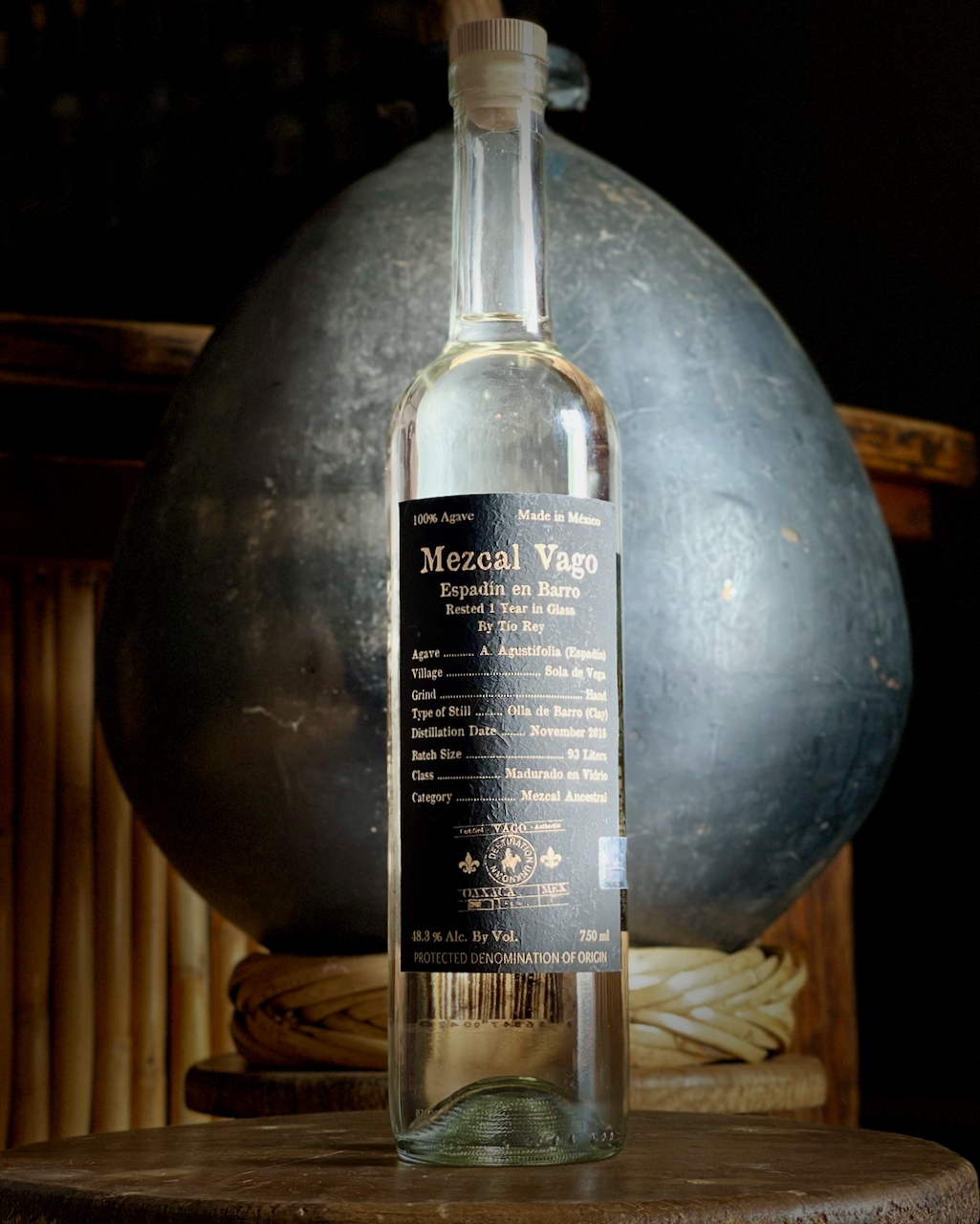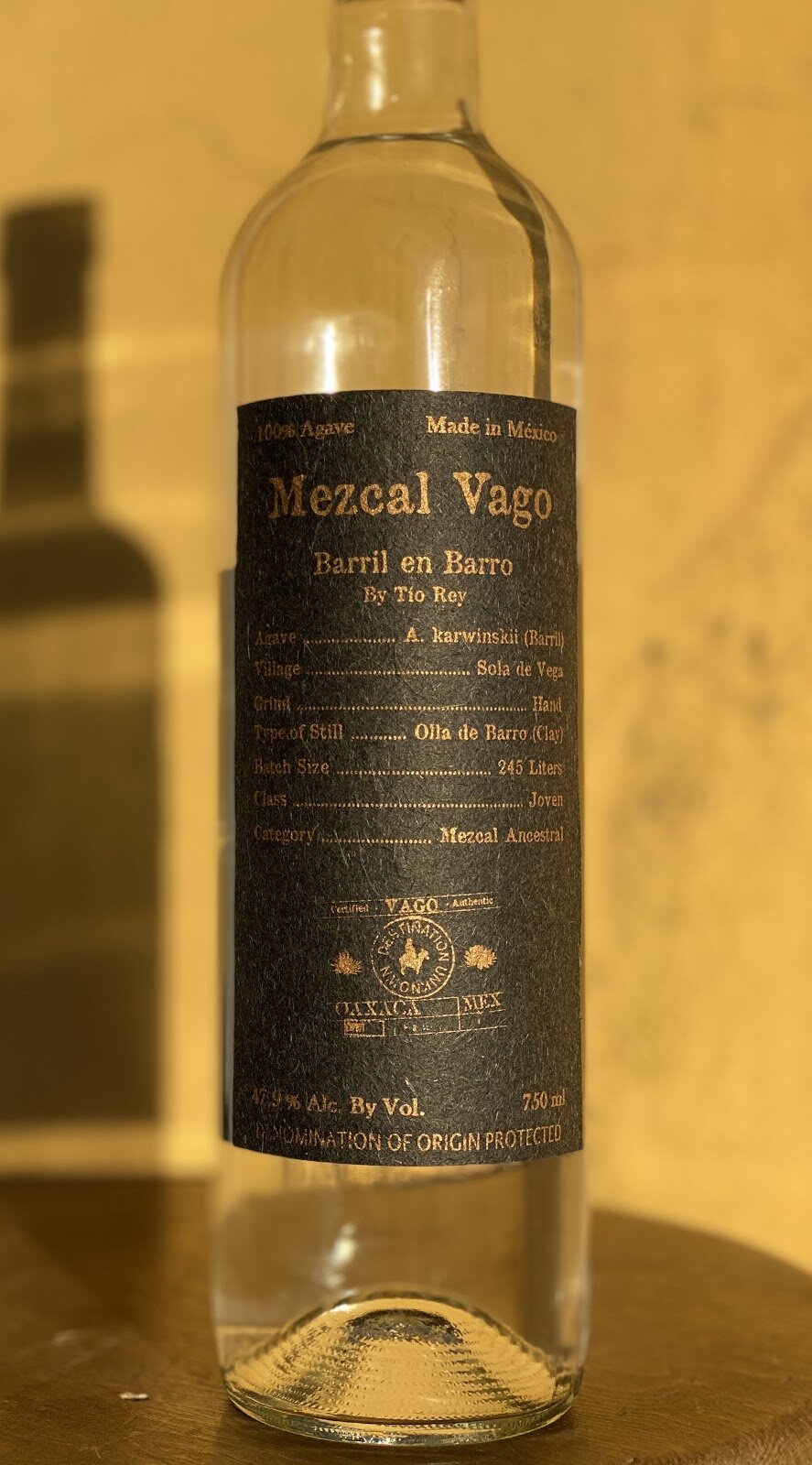Mexicano Aquilino Batch A-06-M-19
Mezcal Vago’s Mexicano is a treat for connoisseurs. This mezcal has become renowned for its’ nuance and is beautiful sipped on its own. It is one of the lightest, most elegant expressions of mezcal to come out of the Vago lineup. It has a great balance of spiciness and sweetness that is distinct to the Agave Mexicano. Aquilino’s techniques highlight these characteristics from the spicy aroma through a touch of sweetness on the finish. The hints of cacao, cinnamon, and vanilla make it a perfect digestif or pairing with dessert.
This particular batch was produced in May of 2019. The batch consisted of 139 piñas harvested in the Zimatlan Valley region of Oaxaca. The piñas weighed 9.798 kg, an average of 70.49 kg per plant. When harvesting these agave, we Aquilino was slightly concerned, as the outside of the piñas had been scorched in a recent brushfire and in his experience, agave that had been burnt prior to harvest could often produce mezcal that is high in methanol. However, being ever curious, Aquilino decided to harvest the agave to see what kind of flavor profile he could extract. Magic. This batch of Mexicano ended up being one of the most balanced that we have tried. It has a pronounced stonefruit profile up front to compliment the mint notes often found in Aquilino’s Mexicano. The mid-palate contains a vegetal and floral quality with a pop of allspice and nutmeg in the finish.
For Mezcal Vago’s Mexicano, Aquilino sometimes combines 10% (raw agave weight) of Agave Espadín with the Agave Mexicano in the roasting pit. This is done in the rainy seasons to add sugar to the fermentation of the naturally low-starch Mexicano, helping to stabilize it and increase the yield off the stills. It also adds a touch of sweetness, help bring out the subtle flavors of the Agave Mexicano and leave a lasting finish. They are roasted, ground, fermented and distilled together. In the drier seasons, when starches are more concentrated, Aquilino ferments the batches using 100% Mexicano.
Agave Mexicano
One of the difficult parts of mezcal culture for many to grasp is the influence of regional colloquialisms on agave terminology. With so many indigenous languages even within Oaxaca alone, there is a lot of overlap in informal agave names, with some being used to to refer to different species in different regions. Even more, the same species can have different names in different regions. In the region surrounding Sola de Vega, Mexicano is used to refer to a sub-variety of species Agave Rhodacantha. This sub-species typically has shorter, broader leaves with an oblong shape and short, dark brown to black spines. Needing only 7 - 12 years to reach maturity, these agave are, on average, 30% smaller than Espadin at the time of harvest. These agave typically have less sugar content at the time of harvest than Espadín, producing lighter, dryer and more floral notes. Mezcales from Mexicano can often be very delicate with long finishes. The lightness of these mezcales tend to balance well with the heavier-bodied style of Tío Rey. The geographic distribution of A. Rhodacantha is represented in the map below by the brown coloration.
*Image taken from CONABIO website.
Aquilino García López
Location: Candelaria Yegolé, Oaxaca
Aquilino is the father-in-law of Mezcal Vago’s co-founder, Judah Kuper. This family connection and his exquisite mezcal were the inspiration to form Mezcal Vago. Aquilino had never produced commercially before working with Mezcal Vago and produces exclusively for Mezcal Vago.
Aquilino García López, grows Maguey Espadín, and Maguey Mexicano. He wild harvests Maguey Cuixe (Tobaziche) and Tepeztate. He has taken over fields from his father and also has family and friends with whom he sources agave.
His palenque is in Candelaria Yegolé, Oaxaca (16°29'41.36"N, 96°18'38.69"W) This is a river town in a hot and dry climate at an elevation of around 1100 meters. Two rivers converge in a narrow Valley and it is mountainous on all sides. It is a rugged three-hour drive from Oaxaca city.
The palenque is on Aquilino’s ranch where he lives full time. He and his father moved it to its current location 15 years ago. It has moved around from nearby locations over the years. He believes his family has been making Mezcal for at least five generations. Aquilino does nearly all of the work himself.
The Agave Espadín and Agave Mexicano both take 7 to 9 years to mature and Aquilino is very careful about only using ripe agave. It takes 1000 kilos to yield around 100 liters of Mezcal. So every 10 kilos will yield a liter. The Espadín we cut ranges from 5 to 100 kilos per agave with an average of around 50 kilos for a well-grown ripe piña (agave heart). Therefore, one ripe Agave Espadín yields around seven 750ml bottles of Mezcal. A bit less but similar for Coyote, Arroqueño and Mexicano. Agave Tobalá and Cuixe yield even less.
Batch sizes of Espadín and Elote are around 750 liters. Each batch needs around 7 tons of cleaned and prepared agave piñas. Aquilino limits his batch sizes to one full oven.
The Mexicano and the Cuixe are smaller batches due to the availability of the agave. A batch of Mexicano is between 200 and 900 hundred Liters. The Cuixe is between 100 and 300 Liters (he only does around 2 a year.) The Cuixe is very laborious to make. Locating ripe agave growing wild and spread out over a large region surrounding the village takes lots of time and patience. Many of the agave are far from the road and need to be brought down the mountain by burro. The Cuixe is also laborious to clean and prepare and is tough to grind. It is roasted at least a full day longer than Espadín to fully extract the sugars.
Aquilino uses a traditional stone tahona to grind the cooked agave. All of the mashed agave and its juices are scooped together into the fermentation vats. A full oven of agave will take a couple of weeks to grind. This helps space out the fermentation process so not everything finishes at the same time.
Aquilino’s nine fermentation vats are made of pine and hold up to 1000 liters. The cooked agave and water ferment from the natural airborne yeasts in the air. No additional ingredients are used to make the mezcal other than agave and water.
Each batch ferments for around a week. This varies depending on the ambient temperature at the time of fermentation. Aquilino distills his fermented mash before all of the sugar has fermented. This is sooner than other mezcalero’s’ techniques.
Aquilino has a copper still that has a 250-liter capacity. He makes all the separations (cuts) by smell and taste. The heads are between 70% and 30% AVB and his tails are between 30% and 15% AVB. Everything else he doesn’t use.















